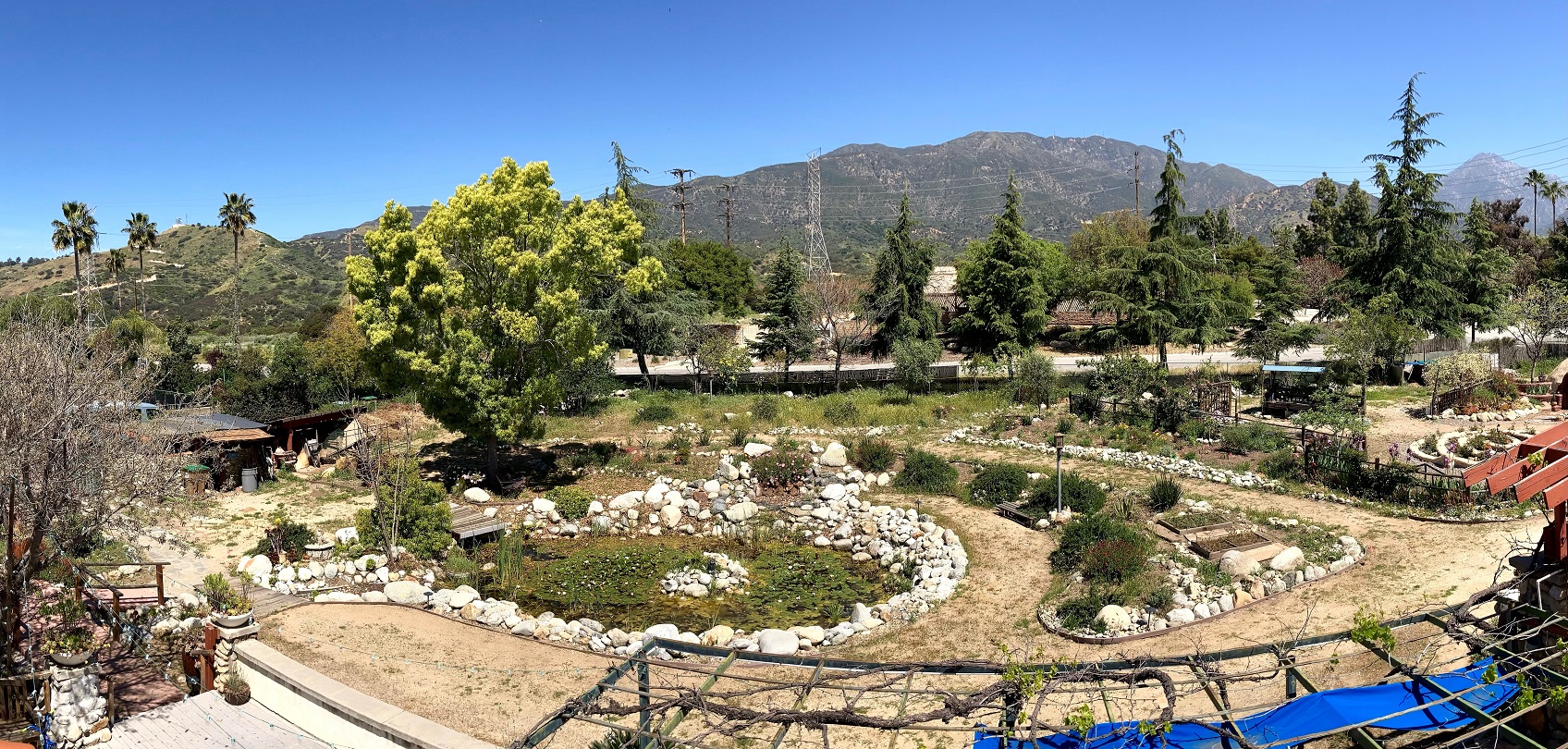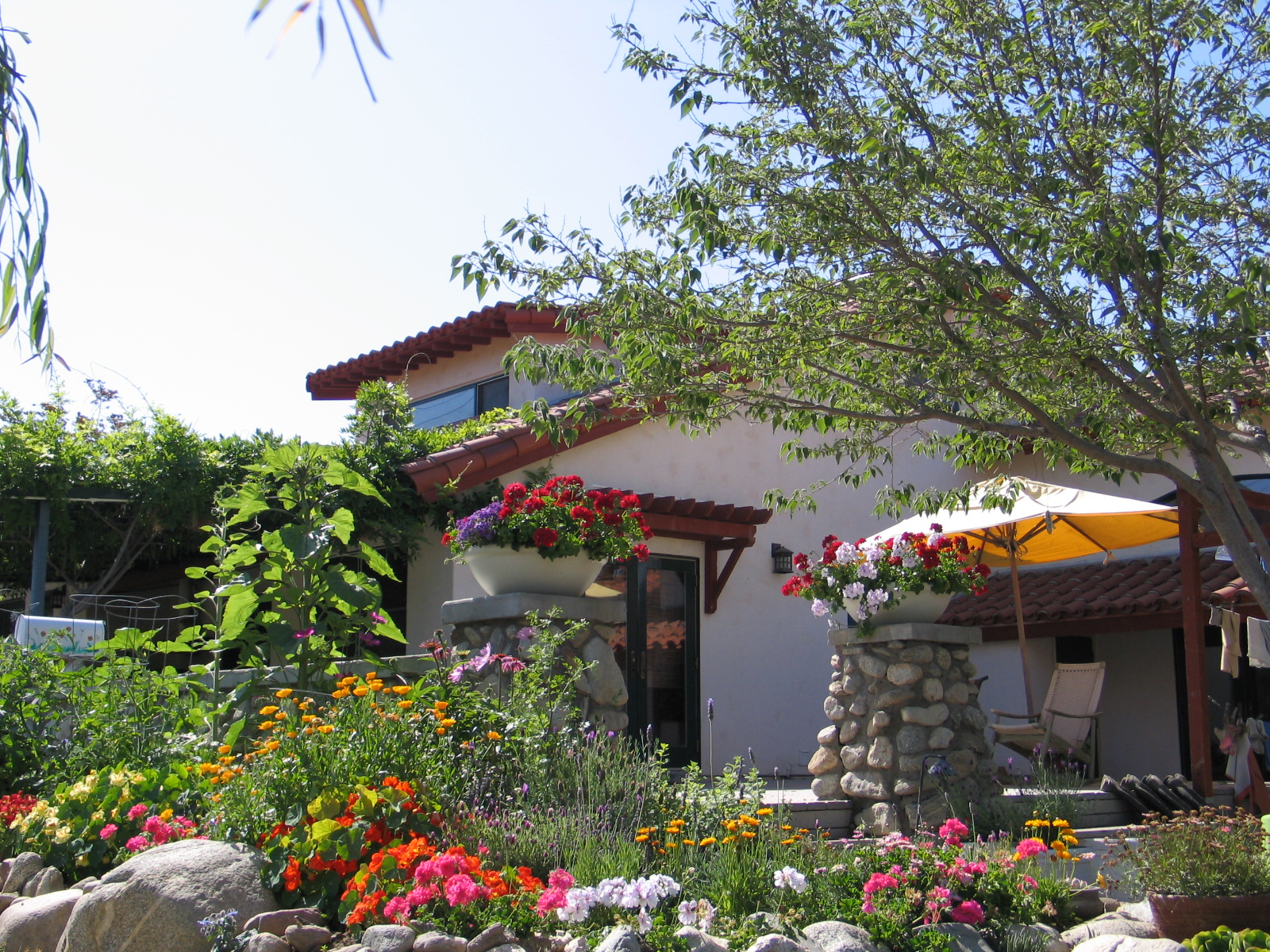Backyards as Forests for Food and Beauty

An Urbanite Manifesto for Earth Day 2023, Inspired by the Work of A. N. Whitehead
This April, we mark the fifty-third anniversary of caring for our earth, and many efforts thus far have never been more apparent. Following the National Environmental Policy Act (1970) and the Clean Air Act Amendments (1977), numerous regulations have been implemented, such as the Clean Water Act (1981), sustainable development treaties (1992) and the Global Warming Solutions Act (2006). Urban agriculture, a social trend for climate resilience and sustainable development, is another expression of this type of caring endeavor. Community farms and food gardens have increased at the grassroots level, becoming prominent in a variety of places, from elementary schools to colleges to private homes in urban areas. Also, regenerative farming practices have been identified and promoted, as there is a growing awareness that the health of our bodies and ecosystem depend on sustainable agriculture.
However, the latest Intergovernmental Panel on Climate Change (IPCC) report (2022) called for “rapid, far-reaching and unprecedented changes in all aspects of society,” as it analyzed the potential results of warming trends, such as the extreme weather patterns of droughts and floods in addition to biodiversity loss, land and ecosystem degradation, rapid urbanization, and a pandemic.
Fortunately, along with the rise of dire concerns comes the rise of new movements that seek to find creative solutions. Among those emerging groups for our ecological crises, is the Ecological Civilization, led by John B. Cobb Jr. This movement is about to create a world where all forms of life can flourish and where we recognize the innate value and relational beauty of all living organisms. Attempting to move beyond our human-centric and mechanical-power-driven civilization, such aspiration shapes a form facilitating six other groups to promote a process-relational worldview inspired by the work of A. N. Whitehead. I first learned about Whitehead through Dr. Cobb, who advocates for biophilic living and regenerative agriculture practices, starting with our own local communities.
The Whiteheadian perspective has taught me that we create the best circumstances by choosing anew in every moment of becoming and perishing. Whitehead’s metaphysical terms and insightful interpretation have shown me the power our imaginations have in creating our realities. In particular, our keen prehensive faculty shapes our decisions and enhances our environment just as our environment affects us—our moods, emotions and senses. Just like the basic features of an organism’s evolutionary process, I am convinced that the well-being of the planet is directly related to the well-being of one’s own family. As such, each family needs to respond to the call for their own home, family, and local community so that wellness for our entire planet becomes possible. Without taking this radical approach, it would be nearly impossible to reverse the effects of climate change and the degradation of our ecosystems.
This manifesto encourages urbanites to transform their backyards into a forest for food and beauty for the coming years and their predicted climate-related issues. Like Whitehead’s forthcoming speculative ideal, the new vision must first be formulated. Something tangible is then able to come into existence based upon this new ideal.
Prehension and Imagination
According to Whitehead, prehensions are the first concrete experience of all conceptual and physical sensing faculties of relations. By shortening the word “apprehension,” Whitehead intends that the prehending fact of pure awareness of an actual object is powerful during the momentary experience of the perceiver. Actual prehensions are the makers of events, perceiving the conditions of what’s happening here and now. For Whitehead, to prehend or feel through the whole body constitutes a larger and higher perception at the conscious level. For Whitehead, conceptual prehensions are not locked into the physical structure of the brain but
are capacities for evaluating alternatives (by selecting eternal objects) that break from the sequential chain of things for two reasons: 1) a quantitative effect is stirred and 2) the repetition of the past is never neutral and undergoes a valuation of inherited data, which is when novelty comes into play. According to this interpretation, feeling is more powerful than any logical thinking, oftentimes by sensing urgency, peace, or excitement. Thus, I choose to life because I can prehend.
And imagination is key to transformation. Whitehead writes that we make new discoveries with the help of our imaginations. We observe something tangible on a knowable level and use our imaginations to make a leap to the next level of its existence. Transforming our backyards into forests for food and beauty, for example, is possible by first conceiving of this possibility with our imaginations. The forest is the ideal form that every urbanite can dream for his or her own backyard. Each cluster of woodland suggests the most resilient form of a polyculture arrangement able to withstand a warming climate. Each regional forest consists of natural hedgerows and features that give structural and thermal stability in contrast to urban landscapes or agricultural farms.
At my home, the Myra House, the north side of the backyard borders the southern part of the Angeles National Forest. This forest is a riparian woodland, which consists of a broad, leafy winter-deciduous shrubby and herbaceous understory under the big trees—white alders, California sycamores, bigleaf maples, Fremont cottonwoods. This forest is also home to a diversity of many companion species: amphibians, reptiles and rainbow trout, beavers, mountain lions, coyotes, bobcats, black bears, and mule deer as well as many kinds of birds: bald eagles, falcons, hawks, several kinds of woodpecker, owls, pigeons, quails, hummingbird, and wren. Along with the Angeles Forest’s breathtaking beauty, our urban area receives many practical benefits from this natural landscape, such as improved air quality, the capturing of storm water, and the provision of shade and reduced temperatures for living organisms. These might be seen as insignificant improvements because they only affect a tiny percent of the local land area. However, here I want to expand on some of the virtues of an urban backyard forest, emphasizing three specific features.
Forest of cohort: In the forest, interdependency is not an option but rather a mandatory reality. It is a community of diverse species that depend on one another to thrive. Each participant co-evolves in integral companionship with others. Whitehead writes, “A single tree by itself is dependent upon all the adverse chances of shifting circumstances. The wind stunts it; the variations in temperature check its foliage; the rains denude its soil; its leaves are blown away and are lost for the purpose of fertilization.” He also reminds us that trees flourish by their association in a forest. Each tree may lose something of its individual perfection of growth, but they mutually assist each other in preserving the conditions necessary for survival. The soil is preserved and shaded. The microbes necessary for its fertility are neither scorched, nor frozen, nor washed away. He views such a system of organisms as “the triumph of the organization of mutually dependent species.”[2] They interact dynamically, contributing to one another through symbiotic relations, and the forest environment achieves an optimal sustainable community among its numerous companions—bacteria, bugs, worms, and insects in a state of coexistence.
Forest of food: The forest model can help us reimagine how food can be produced in a warming world. This has recently become popular in the US, with forest farms serving as kitchen gardens for homes and the local community. Examples abound of food forests in vacant lots, in public parks, in school yards—everywhere from backyards to large neighborhood gardens. The idea is to build up healthy soil under the shade of tall trees and allow beneficial insects to thrive. Imagine a small backyard forest with tall trees, small trees, shrubs, herbs and groundcover growing together. They have a several layers, from underground tubers to vines to shrubs to short and tall trees. All play different roles: all or most are perennials. And in our backyards, there are always visitors from the wilderness. Permaculture is not about just one specie, human but fertile relationships that make it possible to have edible plants for all other co-living species: birds, deer, rabbits, ducks, and even for coyotes and squirrels.
Forest of awe: Beauty can be defined as being the perfection of harmony. And the perfection of harmony is defined in terms of the perfection of Subjective Form. Whitehead does not explore aesthetic theory through the usual kind of analysis. Rather, he defines the perfection of beauty in terms of “Strength.” In this sense of strength, there are two factors—namely, variety of detail with effective contrast, which is Massiveness, and Intensity Proper (applicable, fitting, fit), which is comparative magnitude without reference to qualitative variety.[3] The increase of both Massiveness and Intensity promotes beauty. Indeed, the forest’s nature reveals both Massiveness and Intensity. And the beauty of forests comes from health and well-being and dimensions of balance and harmony. Awe is an emotion that involves all of these qualities and has been a theme for many artists: Beethoven, Rilke, sculptor Spencer Byles, Claude Monet, Van Gogh. Even in the present generation, we have an example in Pilgrim at Tinker Creek by Annie Dillard.
How to Begin a Backyard Forest
I perceived the need to help restore the health of the earth and the wellbeing of my family, and thus, the Myra House was born and built. Its attempt to follow the Earth Day movement began two decades ago. For the first decade, our primary concern was energy conservation for indoor buildings and the vitality of the outdoor garden hardscape. A dozen years of practical experience at Myra House taught me simply what nature reveals. The soil quality can be enhanced by crop rotation methods. Earthworms and chicken and goat manure work best when applied to existing topsoil to generate biodynamic, healthy fertilizers. However, it is evident that the soil has become increasingly less fertile year after year. For several years, we tried amending the situation, but this seems to have revealed the soil’s limits. The crop quality of these last few years has never been able to compete with earlier years’ robust yield. However, the forest concept was not in the original master plan but came about as we developed our naïve idea of an eco-home style of country villa where every different kind of fruit and vegetable can grow into lush greenery. Having a clear image of forest will indeed help enhance our backyard in the upcoming years.
So, the first order of business is to determine each home’s plot location. Backyard forest gardening is simply an alternative way of integrating edible and useful trees and bushes into home gardens. Design and planning is a crucial task. In the woodland, trees, shrubs, climbing plants, and groundcover occupy the same area of space. Conventional ways of growing food tend to focus only on human needs, aiming at the highest possible yield. Rows of perennials and flowers are beneficial for creating perennial gardens that require less maintenance. Yet, having less rigid boundaries and formal beds, each layer evolves to survive within its particular level in the system. The groundcover layer is exactly what its name implies—a bed of low, ground-hugging plants, preferably of varieties that offer food or habitat for wildlife. Certain plants will play an important function in weed prevention. The final layer of a forest garden consists of shallow-rooted plants, such as garlic and onions. Even just a tiny waterfall/run feature can draw hummingbirds and other birds and insects. Most conventional ways of growing food tend to rely on three nutrients: nitrogen (for leafy growth), phosphorous (for good blooming), and potassium (for strong roots and disease resistance). However, a backyard forest concept should utilize mycorrhizal application, which comes from the root words “myco” and “rhiza,” literally meaning “fungus-root.” This term gets at the mutually beneficial role of these specialized fungi. They colonize plant roots in a symbiotic way, extending far into the soil and improving the symbiotic interactions of the root system and the relationship between the plants and root fungus growth. Thus, the root absorption of water and nutrients gradually increases at every given biomass. Most reforestation and restoration projects have relied on such symbiotic organisms to build healthy ecosystems and biodiversity.
[1] https://www.openhorizons.org/ecological-civilization.html
[2] Whitehead, Alfred North. Science and the Modern World, New York, Free Press, (1925)1962. 296-7.
[3] —. Adventures of Ideas: A brilliant History of Mankind’s Great Thoughts, New York, Mentor Book, (1955)1962, 325.

 Welcome to the Myra House Holistic Living Center -
Welcome to the Myra House Holistic Living Center -
